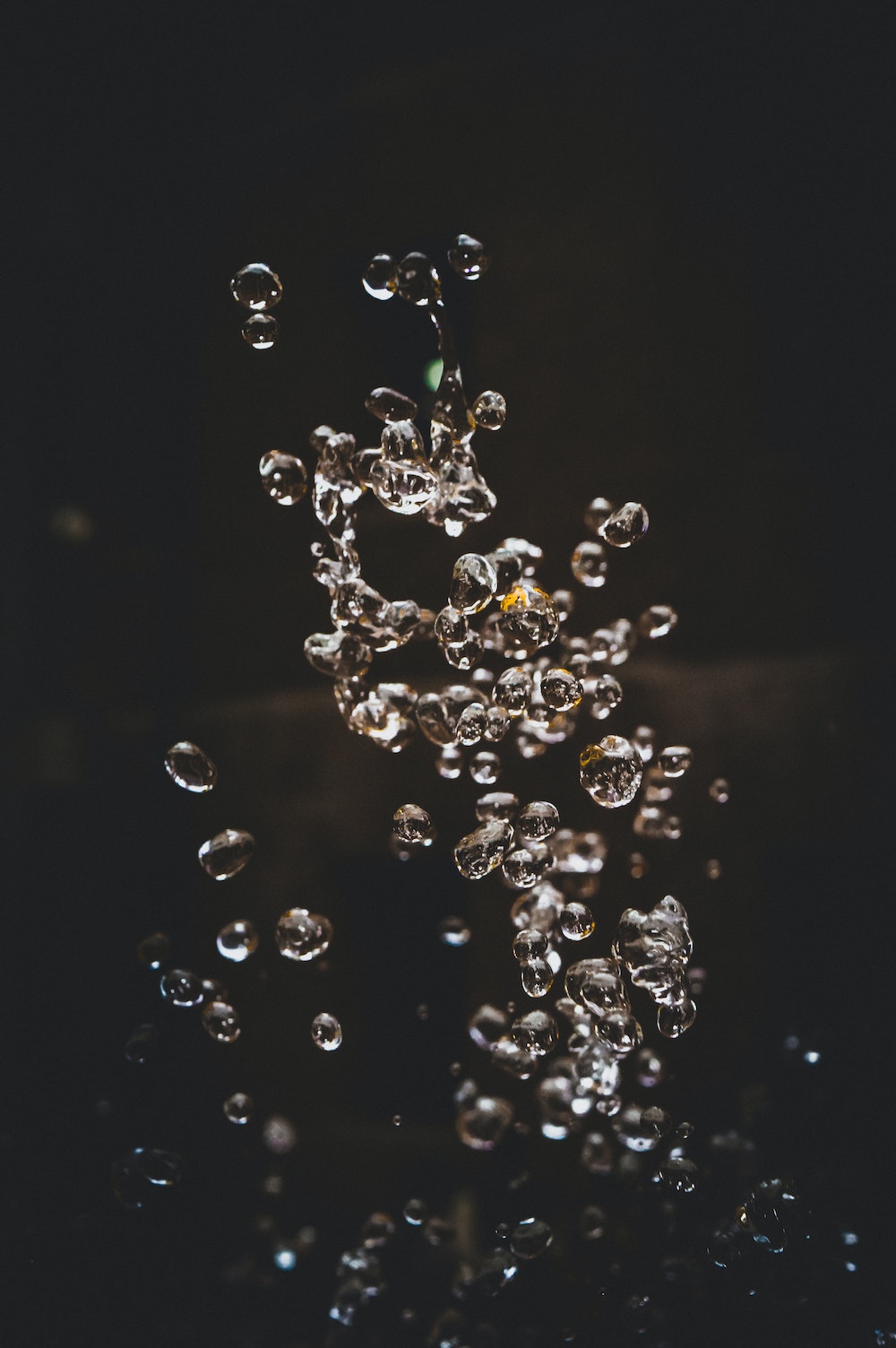Stereotypes aside, it’s an unfortunate truth that those of us who menstruate spend a large part of our existence riding the natural yet often unpredictable waves of our hormones. But how do you know if those monthly ups and downs have become something more involved? Here’s our guide to signs your hormones are out of whack.
Are my hormones out of whack?
First things first, gang. Hormones in all their myriad functions can be delicate little things at times. They work on a very small margin of error, and literally anything can upset them and stop them working quite the way they should.
External factors in particular can have a huge impact on hormone function, for instance, your reproductive and Endocrine systems. Those factors include:
- Diet
- Stress
- Birth control
- Menopause
Of course, as every single body on Earth runs on hormones, fluctuations — and therefore symptoms — are entirely normal. So you could just be experiencing the usual ups and downs of menstrual cycles and modern life. However, if you struggle with the same persistent symptoms, there may be an underlying issue causing a long-term imbalance.
Signs that your hormones are out of whack
The thing about hormone imbalance is that it can take many, many shapes. Symptoms can be varied and seemingly completely unrelated, or written off as PMS and the like. In fact, symptoms are so close to those of other conditions, that they’re often misdiagnosed, generally as depression.
The irony here being, of course, that depression is often a symptom of imbalance, rather than the cause of any issues.
Signs that your hormones are out of whack fall into two distinct camps: Physical and Emotional. And while you probably won’t see all of them — please God — you may well see an individual combination of several elements from both camps.
Physical signs of hormonal imbalance:
- Weight gain and/or loss
- Fatigue
- Dry skin
- Puffy face
- Muscle weakness, aches, tenderness, and stiffness
- Joint pain, swelling, and stiffness
- Increased or decreased heart rate
- Increased sensitivity to cold or heat
- Constipation or more frequent bowel movements
- Low libido
- Hair loss or hair thinning
- Acne
- Vaginal dryness
- Headaches
- Irregular periods
Emotional signs of hormone imbalance:
- Anxiety
- Nervousness
- Irritability
- Depression
- Brain fog
- Mood swings
- Insomnia
- Apathy
What does a hormonal imbalance feel like?
To make things even more confusing you can have an issue both when you have too much of a hormone and if you have too little. And each one can cause specific combinations of symptoms, including how frequent and severe they are. So when it comes to signs your hormones are out of whack, there are some specific clues to what’s going on in how you’re feeling
Too much Estrogen AKA Estrogen dominance
- Anxiety
- Insomnia
- Irritability
This combination of symptoms could mean you have too much Estrogen and, in turn, too little Progesterone.
It’s normal to experience this Estrogen dominance for a few days each cycle around Ovulation, which can lead to the above symptoms. But for some women, this doesn’t level out as it should once their period starts, meaning those symptoms just keep going.
Estrogen and contraceptives
As you probably know, there’s a synthetic version of Estrogen in most Hormonal Birth Control methods, such as the combined contraceptive pill. Hormonal Birth Control keeps your hormones at specific levels to halt Ovulation, and therefore, periods so those signs your hormones are out of whack could stem from that.
If they don’t go away after a few months, it’s worth asking your healthcare team about alternative HBC that might reduce those symptoms.
Too much Progesterone AKA Progesterone dominance
- Lethargy
- Cravings
- Low mood
- Severe or prolonged breast tenderness
It’s normal to have high Progesterone and low Estrogen levels in the days leading up to your period, as well as during pregnancy. But if you’re not sure why these symptoms hang around long-term, Progesterone dominance could be worth looking into.
High Progesterone levels are the body’s way to prepare for pregnancy, which explains the cravings for high-carb and high-fat foods, as well as the desire to curl up in a ball and conserve energy. It even makes you more dismissive of new things, to avoid any risk to your safety.
Progesterone and contraceptives
A synthetic version of Progesterone, known as progestin is found in the mini-pill, and the hormonal IUD, as well as some other contraceptives. So if you currently use one of these methods and the side effects are really bothering you, it may be worth considering alternatives.
Too little Estrogen and too much Testosterone
- Irrational anger
- Acne
- Hair loss
- Excessive hair growth
- Unexplained weight gain
It’s totally normal and healthy for women to produce a low level of Testosterone as part of their cycle. But too much can lead the above symptoms. This is a common imbalance among ladies living with PCOS — so definitely talk to your doctor if this symptom combination is familiar.
What else causes hormone imbalance?
Of course, Estrogen and Progesterone aren’t the only hormones in your body. There are literally dozens of them and they all play important roles in keeping you working the way you should. For instance, Insulin is a hormone and is at the center of type 2 diabetes.
Thyroid hormones control a huge number of processes in your body and when they stop working, your body responds with a huge number of symptoms, including all of those mentioned above. Menopause, post-pregnancy, and even fertility treatments can all result in symptoms, as can trauma.
What we’re saying is, there are so many ways for your hormones to unbalance themselves, it’s a wonder any of us is ever well.
Why are my hormones out of whack?
The reasons for a hormonal imbalance can be as varied as the symptoms they cause. From Endocrine issues, including Thyroid dysfunction, to PCOS, Hypothalamic Amenorrhea, Diabetes, and PMDD, hormones can cause a lot of trouble.
Some of those issues can be genetic, or follow in families, while others can be down to extreme stress or exercise, dietary restrictions, or medications. But oftentimes, reasons and causes can be very hard to pin down.
How do you know if your hormones are too low? Or too high?
So, if you’re asking yourself, ‘Are my hormones out of whack?’ there are some things you can do to officially find out. First off, if you’ve recognized any of the symptoms we’ve discussed, it’s time to start tracking when, how often they appear, and how severe they are. And the Hormona app can help you with that!
Second, get yourself to a healthcare professional and tell them about your symptoms and share your concerns. They’ll be able to help you rule out any underlying issues through tests and a discussion of your family and medical history.
How do you reset your hormones?
So, if you think you’ve spotted some signs your hormones are out of whack, what can you do? Talking to your healthcare should be top of your list, they can help with symptom management and medication advice.
But there’s still plenty you can be doing to support your body and your hormones, reducing symptoms and, hopefully, helping you get through the day.
More sleep, less stress
Perhaps the best thing you can do to support your hormones is to make sure you’re getting enough sleep. Have you ever had your menstrual cycle come to a halt during a stressful period? It’s no coincidence that many women experience this.
Whatever is stressing you out — work, family, relationships — Cortisol, AKA the stress hormone, races through your body as though you need to fight for your life. But this evolutionary gift comes with a cost, as these days, stressors can’t be solved by running or throwing a punch. And because of this fight or flight response, bodily functions such as digestion and menstruation are put on hold until the “threat” subsides.
It’s worth noting that caffeine and over-exercising also elevate Cortisol levels. If your periods have stopped or become very unpredictable, your body is telling you to slow down. Please talk to a healthcare type about underlying causes as well as lifestyle and diet changes that might help.
Dark Chocolate and Leafy Greens
Okay, maybe not together… But incorporating cocoa and dark green veggies into your daily diet may be your ticket to hormone harmony!
Not only are these foods a rich source of endorphin-releasing antioxidants, giving your irritability some relief, but also in Magnesium, which most of us could do with more of. Low magnesium levels exacerbate anxiety, irritability, and stress.
This induces a spike in the fight-or-flight hormone cortisol, sabotaging your other hormones’ ability to do their thing. But don’t worry if you’re not a fan, Magnesium is also found in handy supplement form.
Omega-3
Since omega-3 intake also benefits brain health, soothes anxiety, and nourishes the skin, hair, and nails — it’s an overall winner.
In general, women need to be less afraid of fats. They are essential for the formation of healthy cell membranes and steroid hormones like Progesterone and Estrogen. Omega-3 fats are the ones so more of them, and less saturated fat are a great place to start.
Great sources are flax or chia seeds, which you can easily add to cereals, smoothies, baked goods, and salads due to their versatility. You can also get Omega-3 from fish, particularly the oily kind, as well as supplements.
Plant-based Estrogen
Soy can actually be a great boost when your Estrogen levels drop. This naturally high-protein, low-fat bean is high in calcium and iron — and its plant Estrogens, also known as Phytoestrogens, have the ability to mimic the ones we produce naturally.
Another source of plant Estrogen is the curcumin compound, found in turmeric. This golden spice has also been used for its anti-inflammatory properties for centuries. A great excuse to treat yourself to a soymilk-turmeric latte when low Estrogen is getting you down!
Signs your hormones are out of whack: When do you see a doctor?
If your symptoms persist for a couple of months or more, or become more severe or frequent at any time, please see a healthcare type as soon as you can. Not only will it put your mind at rest, but equally, if treatment is necessary, the sooner you start it, the better you’ll feel.
Likewise, if you’ve been diagnosed with an imbalance and you’re still seeing symptoms. Sometimes treatment needs to be tweaked before you find the perfect fit. And that can also take some time.
Remember gang, you’re best placed to know when something is atypical for you, so trust your instincts and tell someone what’s going on. And keep telling them until someone listens.
In the meantime, keep tracking, keep improving your sleep and nutrition, and most importantly, keep taking care of you.






